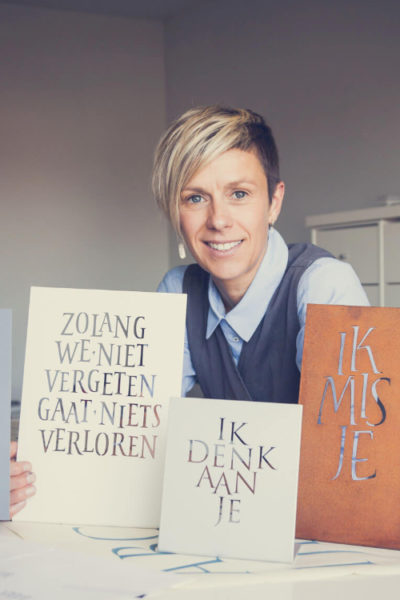Inge Dezutter
Bruges produces the best lace in the world and is the only one to still produce hand-made lace. Stroll through a shopping street and the many shop windows with lace will soon attract your attention. Still, those shops often only sell classical pieces that are probably machine-made. For the real lace craft you will have to look a bit further.
The art of lace-making
No machine-made lace as in the shops, but the real craft. That is what Inge Dezutter stands for. She has not been a specialist in the field of sculptural lace objects for years for nothing. Artist of Belgian soil, teacher of Lace and Textile Design and above all, a woman with passion for her work.
Lace-making is an ancient technique that is not always familiar to the younger generation and for this reason, Inge passes on her knowledge of lace-making to a new generation of artists as a teacher of Lace and Textile Design at the Academy of Bruges (DKO). In addition she often applies her own ideas to a variety of materials. For instance, she breathes new creative life into each work of lace by incorporating a subtle lace accent in textile, ceramics and porcelain.
KAN’T
Inge brings her work together under the collective name of KAN’T, which emphasises the processing, reworking, working out and researching of the visual quality of the lace craft. To Inge, lace-making is the perfect way express here creativity and transform lace into a genuine art object in various shapes. Despite the use of materials such as ceramics, porcelain and hand-made threads, the uniqueness of the textile still has the upper hand in her work. Because of here Bruges roots it will always be about lace.
The capital of lace
Lace-making is an centuries-old, laborious technique, but still there are few people who have mastered this technique. For what is lace really? The material of lace itself is a precious material which used to be affordable only to the wealthier classes. In the 17thcentury, lace-making was for many women an important source of income. In the city of Bruges alone, no less than 6,000 women in a total population of 40,000 were engaged in making genuine lace art objects. To the present day, lace has been inextricably linked to Bruges. Lace-making being so popular among the Bruges population, a special variant was developed, namely Bruges lace or point-de-fée. Today, the hourly wages unfortunately make the work unaffordable. But women such as Inge keep the art of lace-making meticulously alive.
Discover more about Inge? Visit her website.
Meer van Inge ontdekken? Bekijk haar website hier.
Bruges sizzles.
Bruges is a city with an ancient face, but with the heart of a young twenty-something. The centuries-old city of art keeps reinventing itself non-stop, even though it looks like a place where time has stood still. We will gladly prove to you that modern Bruges is more than the sum of its historic parts.


